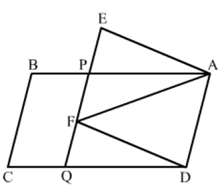If P={a,b,c,d,e,f}andQ={a,c,e,f}, prove that (P−Q)∪(P∩Q)=PSolution in Bengali
Step by step video & image solution for If P={a,b,c,d,e,f} and Q={a,c,e,f}," prove that "(P-Q) cup(PcapQ)=P by Maths experts to help you in doubts & scoring excellent marks in Class 12 exams.
Topper's Solved these Questions
- BOOK - CHHAYA PUBLICATIONCHAPTER - SET THEORY EXERCISE - Long answer type questions47videos
SET THEORY
- BOOK - CHHAYA PUBLICATIONCHAPTER - SET THEORY EXERCISE - Multiple Correct Answer Type5videos
SET THEORY
- BOOK - CHHAYA PUBLICATIONCHAPTER - SET THEORY EXERCISE - Very short answer type questions33videos
SET THEORY
- BOOK - CHHAYA PUBLICATIONCHAPTER - SEQUENCE AND SERIESEXERCISE - Sample Questions for Competitive Exams (Assertion-Reason Type)2videos
SEQUENCE AND SERIES
- BOOK - CHHAYA PUBLICATIONCHAPTER - SIGNIFICANCE OF DERIVATIVE AS RATE OF CHANGEEXERCISE - SAMPLE QUESTIONS FOR COMPETITVE EXAMINATION20videos
SIGNIFICANCE OF DERIVATIVE AS RATE OF CHANGE
Similar Questions
For a finite set A, the number of elements in A is denoted by n(A). Use a Venn diagram (or otherwise) to prove that, for any two sets A,B
n(A∪B)=n(A)+n(B)−n(A∩B)03:21View SolutionIf A be a set, then_____
02:05View SolutionDefine with examples:
Finite and infinite sets03:03View SolutionStatement I : If the arithmetic mean of two numbers is 52, geometric mean of the numbers is 2, then the harmonic mean will be 85.
Statement II : For a group of positive numbers (G.M.)2=(A.M.)×(H.M.)02:32View SolutionFind the points on the curve y=x2+1x2 at which dydx=0.
02:14View SolutionLet Ec denote the complement of an event E. Let E,F,G be pairwise independent events with P(G)>0 and P(E∩F∩G)=0 Then P(Ec∩Fc∩G) equals (A) P(Ec)+P(Fc) (B) P(Ec)−P(Fc) (C) P(Ec)−P(F) (D) P(E)−P(Fc)
03:35View SolutionIn a ABC,EandF are the mid-points of ACandAB respectively. The altitude AP to BC intersects FE at Q Prove that AQ=QP
02:06View SolutionIn Figure ABCDandAEFD are two parallelograms. Prove that: PE=FQ
 02:32View Solution
02:32View SolutionIn Figure, ABCDandAEFD are two parallelograms? Prove that: ar(APE):ar(PFA)=ar(QFD):ar(PFD)
 02:34View Solution
02:34View SolutionIf P={a,b,c,d,e}andQ={a,e,i,o,u}, prove that
P∩Q⊂P.02:43View SolutionIf f(x)=epx+q [p and q are constants], show that,
f(a).f(b).f(c)=f(a+b+c).e2q03:12View SolutionIf a:b=c:d=e:f then (pa+qc+re):(pb+qd+rf) is equal to
02:40View SolutionP={a,b,c,d,e} এবং Q={a,e,i,o,u} হলে প্রমান কর যে , P⊂P∪Q
01:41View SolutionP={a,b,c,d,e} এবং Q={a,e,i,o,u} হলে প্রমান কর যে , P∩Q⊂P
01:54View SolutionP={a,b,c,d,e,f} এবং Q={a,c,e,f} হলে প্রমাণ করো যে, (P–Q)∪(P∩Q)=P |
03:02View Solution

